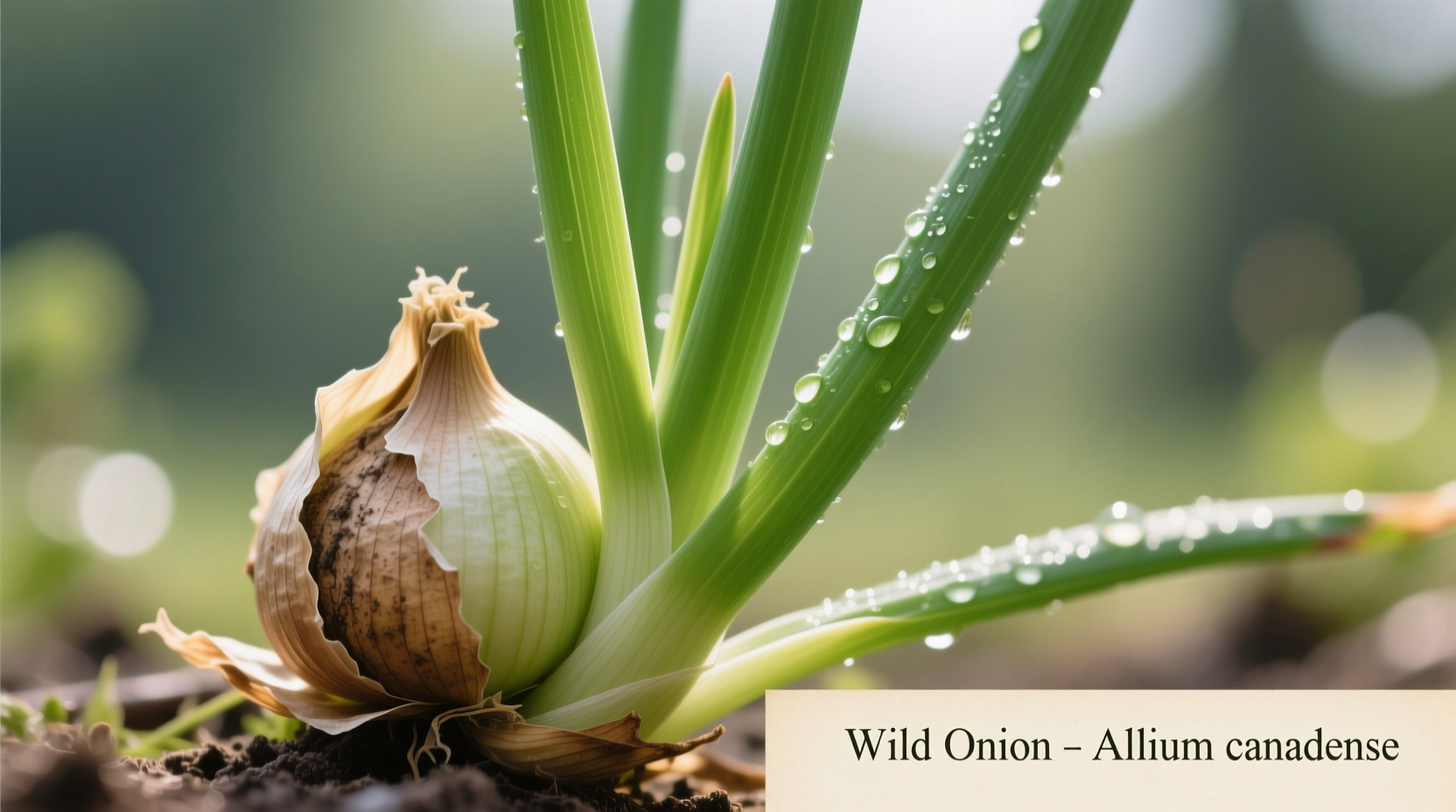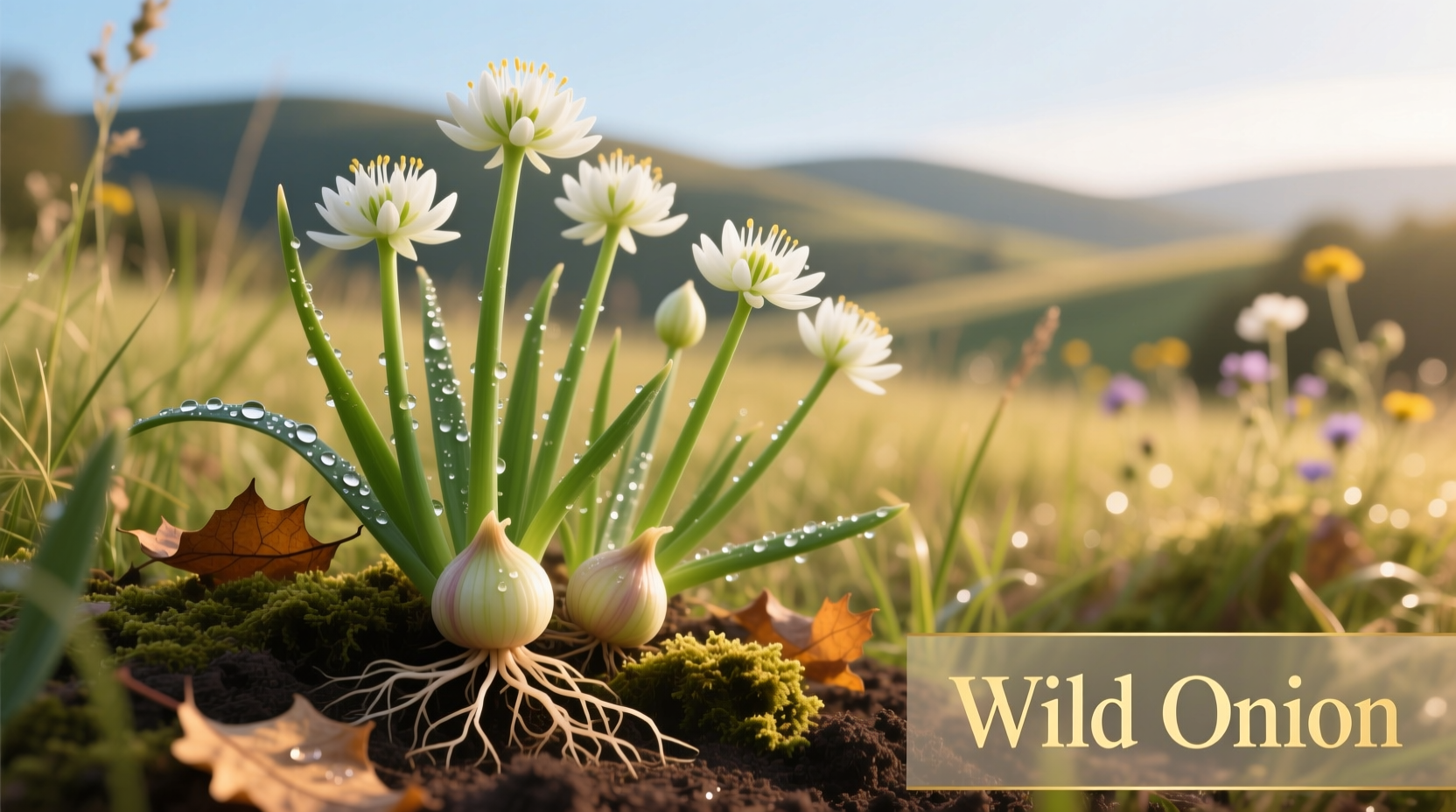Why Wild Onions Deserve Your Attention
Foraging for wild onions connects you with nature while providing free, nutrient-rich ingredients. These versatile plants contain vitamins A and C, plus beneficial organosulfur compounds. Unlike store-bought varieties, wild onions offer unique regional flavors that change with seasons and terroir. But the real value lies in learning to identify them correctly—this knowledge could prevent a dangerous mistake.
Spotting True Wild Onions: The Essential Identification Checklist
Successful foraging starts with accurate identification. Wild onions belong to the Allium genus, sharing key characteristics across species:
- Aroma test: Crush a leaf or bulb—true wild onions emit unmistakable onion/garlic scent
- Leaf structure: Hollow, cylindrical leaves (not flat like toxic look-alikes)
- Flower clusters: Typically spherical umbels with white, pink, or purple flowers
- Bulb features: Often covered in papery sheaths with fibrous roots
Seasonal variations matter—spring brings tender greens, while summer offers mature bulbs. The USDA Plants Database confirms over 500 Allium species exist globally, with regional varieties adapting to local climates.

Life-Saving Distinctions: Wild Onions vs. Poisonous Look-Alikes
Mistaking death camas or lily family plants for wild onions causes numerous poisonings annually. This comparison table highlights critical differences:
| Feature | Wild Onion | Death Camas (Toxic) |
|---|---|---|
| Smell when crushed | Distinct onion aroma | No onion scent |
| Leaf shape | Hollow and round | Flat and solid |
| Bulb appearance | Layered, onion-like | Smooth, single-coated |
| Flower structure | Spherical clusters | Loose clusters |
University of California's Agriculture and Natural Resources department emphasizes that the smell test remains the most reliable field identification method. Never consume any plant without confirming multiple identification markers.
Where and When to Find Wild Onions
Successful foragers understand seasonal patterns and habitat preferences:
- Spring: Look for young greens in meadows and forest edges (March-May in North America)
- Summer: Mature bulbs develop in drier grasslands and open woodlands
- Fall: Second growth appears after rains in Mediterranean climates
Regional variations matter—Western North America features Allium acuminatum (tapertip onion), while Eastern regions host Allium tricoccum (ramps). The USDA Natural Resources Conservation Service provides detailed distribution maps showing specific species habitats.
Sustainable Foraging Practices You Must Follow
Responsible harvesting ensures wild onion populations thrive for future generations:
- Take only 1 in 20 plants in any patch
- Use the "rule of thirds"—harvest one-third greens, leave one-third, take one-third bulbs
- Avoid protected areas and private property without permission
- Never harvest endangered species like Allium munzii (Munz's onion)
The North American Foraging Council recommends using small trowels rather than digging sticks to minimize soil disruption. Always leave the basal plate intact when harvesting bulbs to allow regrowth.
From Field to Feast: Preparing Wild Onions
Proper preparation maximizes flavor while preserving nutrients:
- Cleaning: Soak in cold water to remove soil from hollow stems
- Sorting: Separate bulbs, greens, and flowers for different uses
- Storage: Keep unwashed in perforated bags in refrigerator crisper (up to 2 weeks)
- Preservation: Chop and freeze in oil, or pickle bulbs for winter use
Culinary applications vary by plant part—bulbs work in place of cultivated onions, greens add subtle flavor to salads, and flowers make beautiful edible garnishes. For best results, use wild onions raw or lightly cooked to preserve their delicate flavor profile.
Simple Wild Onion Recipes for Beginners
Start with these approachable preparations that showcase wild onion flavors:
- Wild Onion Pesto: Blend 1 cup greens, 1/4 cup nuts, 1/2 cup olive oil, Parmesan, and garlic
- Pickled Wild Onions: Cover cleaned bulbs with vinegar, sugar, and spices for quick refrigerator pickles
- Wild Onion Frittata: Sauté bulbs and greens, then fold into egg mixture before baking
Chef Maya Gonzalez notes: "Wild onions' flavor intensity varies by location—always taste a small piece before committing to a recipe. Mountain-grown varieties often have stronger flavors than lowland specimens."
When Wild Onions Become Unsafe: Critical Boundaries
Understanding context limitations prevents dangerous mistakes:
- Pollution risks: Never harvest near roadsides (heavy metal contamination)
- Seasonal toxicity: Some species develop bitter compounds when flowering
- Regional dangers: Western death camas (Zigadenus venenosus) closely resembles wild onions in Pacific Northwest
- Legal restrictions: National parks often prohibit plant harvesting
Extension services at land-grant universities provide region-specific safety guidelines. Always cross-reference multiple identification sources before consumption.
Your Wild Onion Journey Starts Now
With proper knowledge, wild onions offer delicious, free ingredients right outside your door. Start small—find one patch, verify identification through multiple methods, and harvest responsibly. Join local foraging groups or extension service workshops to learn from experienced practitioners. Remember: when in doubt, leave it out. The true reward isn't just the meal, but the deeper connection with your local ecosystem.











 浙公网安备
33010002000092号
浙公网安备
33010002000092号 浙B2-20120091-4
浙B2-20120091-4